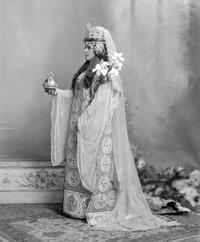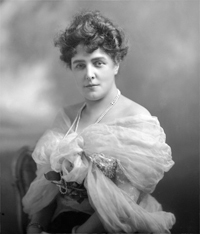Lady Randolph Churchill,
Lady Randolph Churchill, née Jennie Jerome, daughter of a wealthy American financier and mother of Winston Churchill, was reputed to be “one of the most beautiful of the many beautiful American women who have married Englishmen of rank.” By 1897 she was already a widow and it was said that she had been a mistress of Edward, Prince of Wales. Her discretion about this affair was summed up in her own memoirs:
Others, such as the Austrian sculptor Emil Fuchs, hinted at her life-style:
Although considered one of the leading beauties of the era, Virginia Tatnall Peacock, in her Famous American Belles of the Nineteenth Century, pointed out that “she leans perhaps too much towards the masculine in mental poise and temperament to be an adequate reflection of purely feminine beauty.” For the Ball she chose to represent the famously beautiful 6th century Theodora, who had risen, according to the Greek author Procopius, from dancing girl on the game to Byzantine Empress. Gibbon’s Decline and Fall of the Roman Empire quotes Procopius in describing one of her lewd practises which involved barley grains, servants and geese. The story re-entered the popular imagination with Victorien Sardou’s play Theodora – a role created by Sarah Bernhardt in 1884 in a majestically lavish production with incidental music by Massenet at the Port St. Martin Theatre in Paris. In order to recreate the opulent costumes, Bernhardt had made a research trip to Ravenna to study and sketch the mosaics of Theodora in the church of San Vitale. Her production of the play was termed by Emile Perrin, director of the Comédie Française “the greatest effort of mise-en-scène of the century.”
The costume which Lady Randolph wore to the Ball (and which she wore to other costume balls as late as 1911), although doubtless inspired by Bernhardt’s success, was designed by the orientalist painter JJ Benjamin-Constant and executed by Worth of Paris. Holding an orb and the Empress Theodora’s favourite flower – the white lily, and with her tresses undressed, Lady Randolph wears an under-dress of “Eastern fabric” in cream and gold, with draperies from the neck of green and mauve. The hem of the costume has hand-painted angels set in a circle of velvet with beads and gold ruche – a motif which Worth had used in 1891 on the famous “Lohengrin Cloak” commissioned by Dame Nellie Melba and worn in performance before the Emperor and Empress of Russia. The whole effect would have been that of a shimmering Byzantine cloth of gold. It was at the Ball that Lady Randolph first met her second husband – George Cornwallis-West in his unhappy choice of costume. Lady Randolph fell very strongly for George and three years later, they married in spite of the loss of title which that entailed for her. As a ditty of the time proclaimed:
Although Lady Randolph was photographed on the night of the Ball immediately after Grand Duke Michael, she was better able to strike an imperious pose in the two lower images in costume which were made in the Lafayette studio two weeks after the Ball. |
Click on image to enlarge Click on image to enlarge Click on image to enlarge
Photographed here in 1899 by Lafayette, the chiffon-draped pose, gives a clearer idea of Lady Randolph Churchill's allure. Obviously a party animal, Princess Marthe Bibesco recounted that in 1874, Jennie heavily pregnant with a son, Winston, "reluctantly tore herself away from the ballroom only after he had made his impatience to come into this world known by the most obvious signs."
|
||||
|
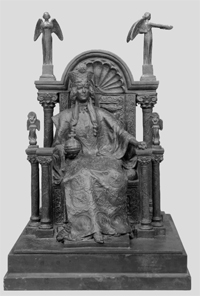

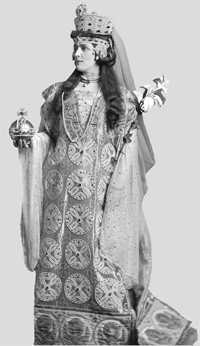
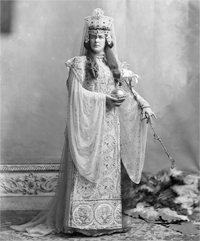 V&A Lafayette Archive
V&A Lafayette Archive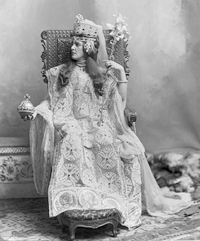 V&A Lafayette Archive
V&A Lafayette Archive